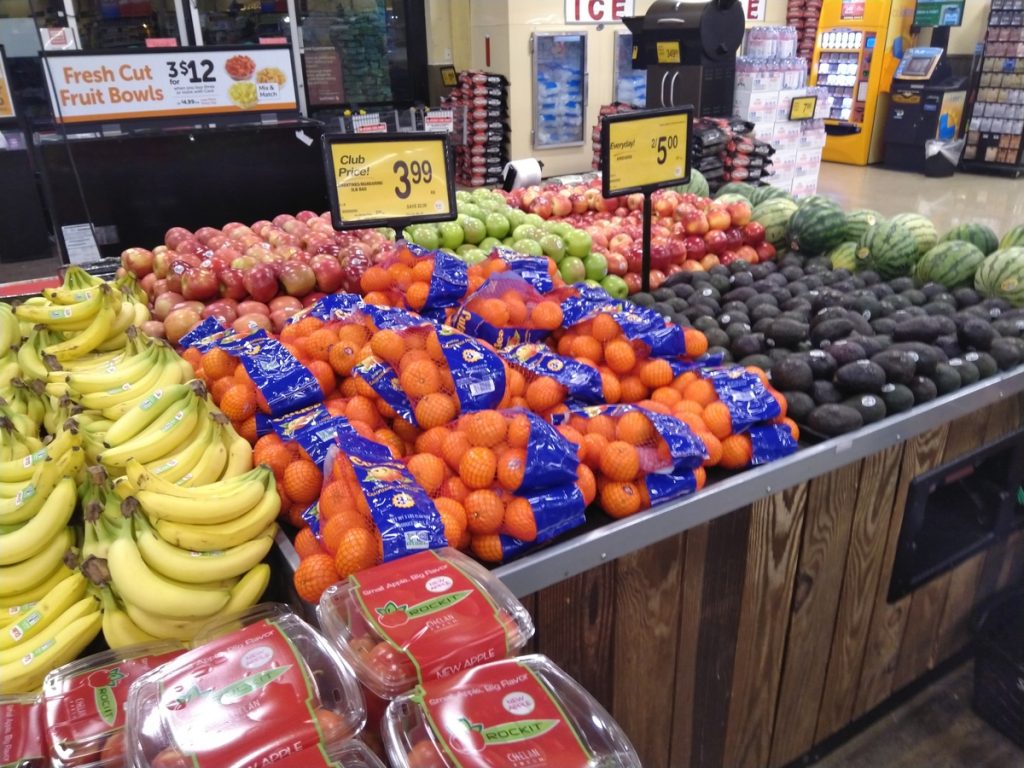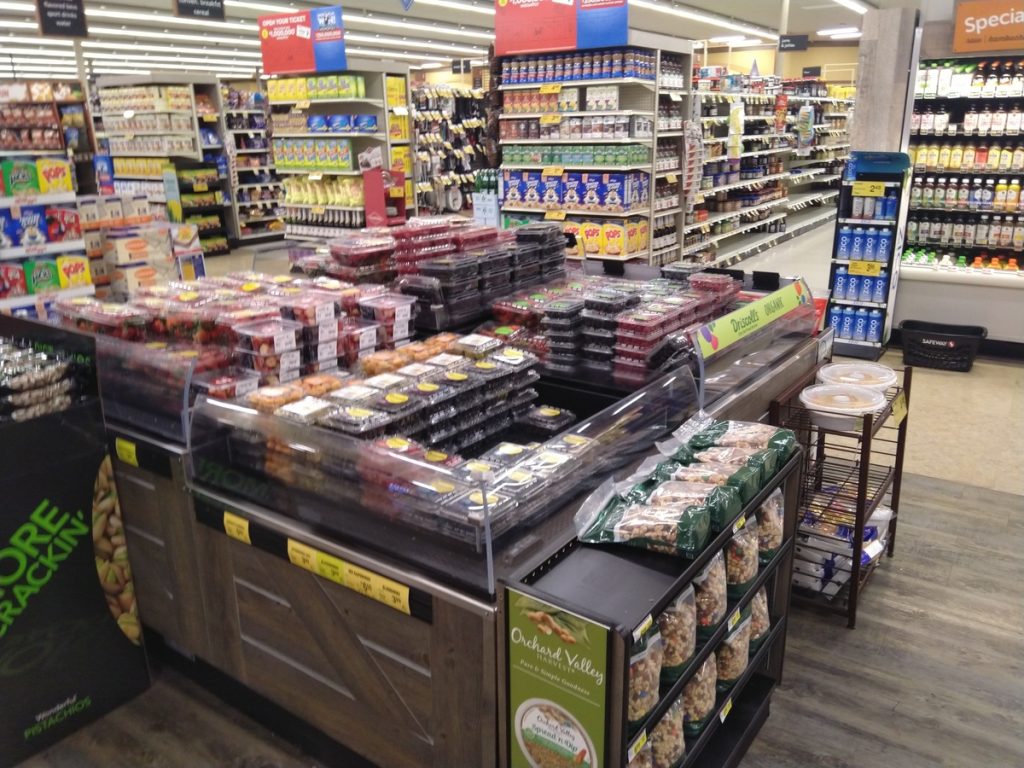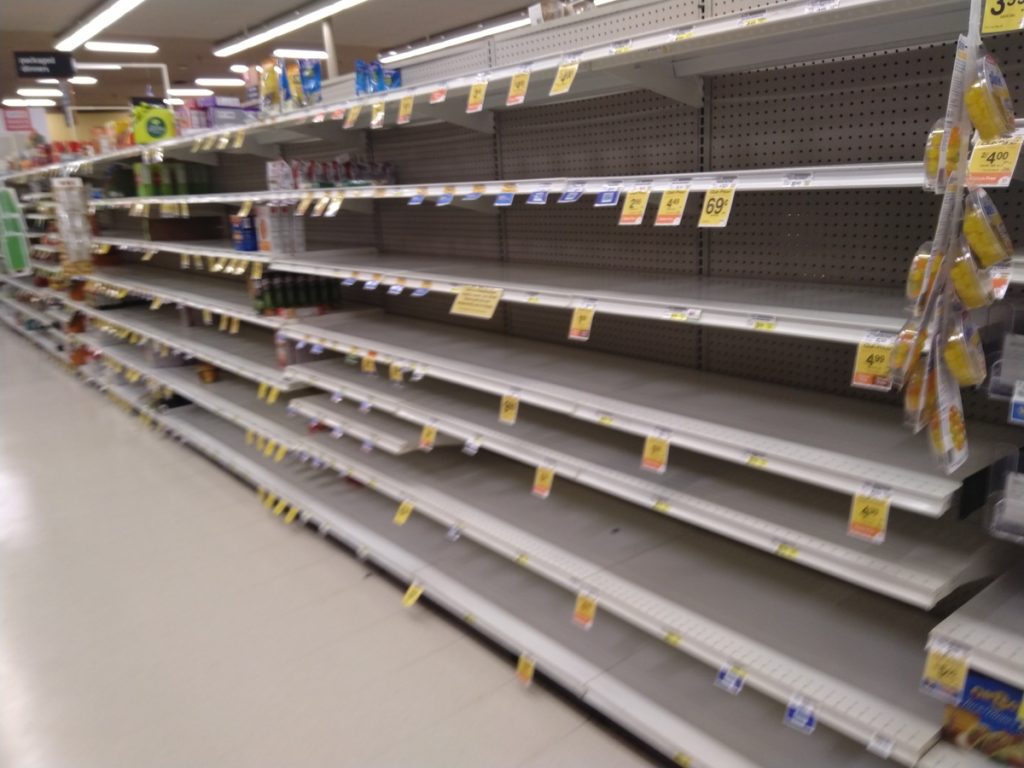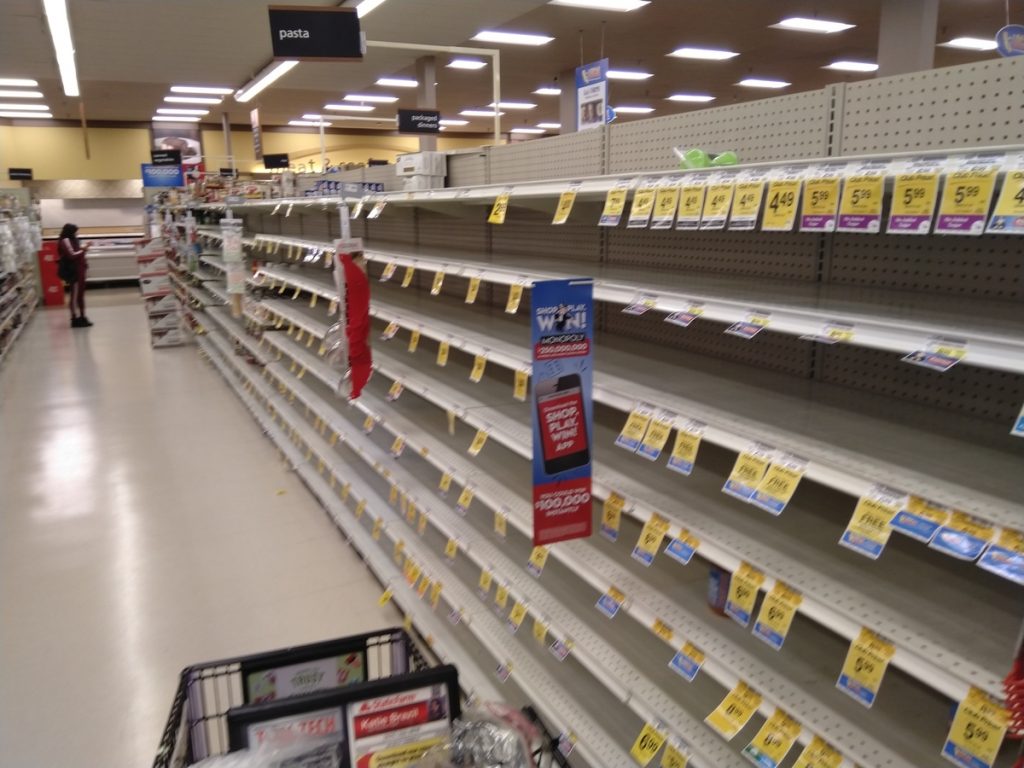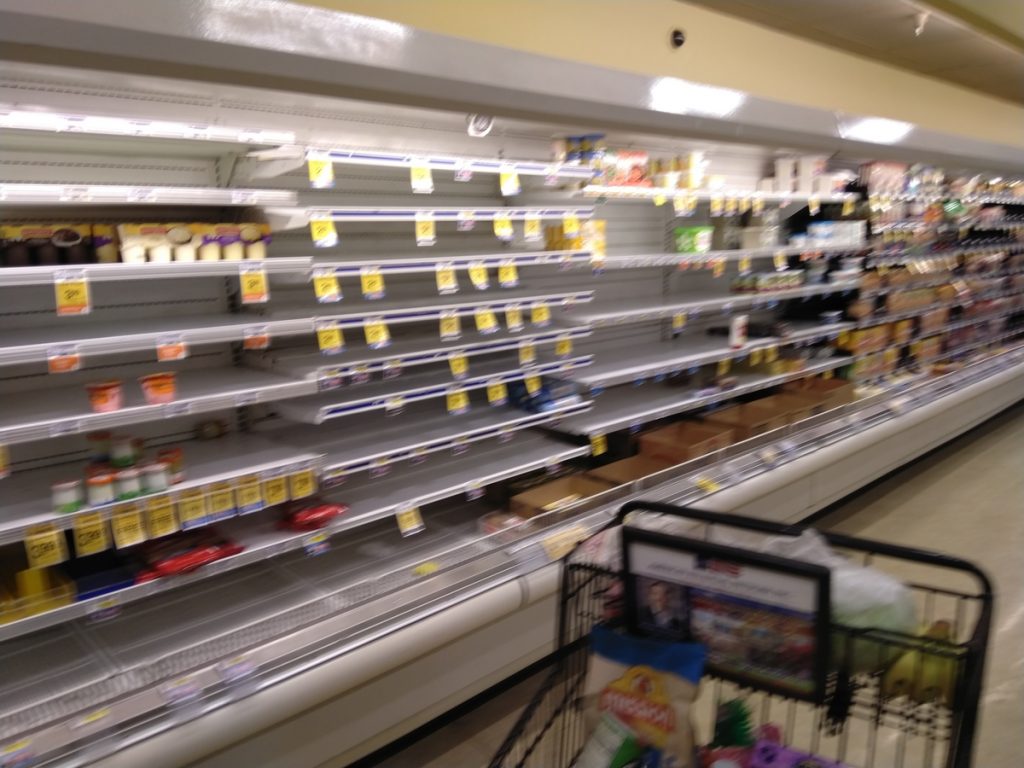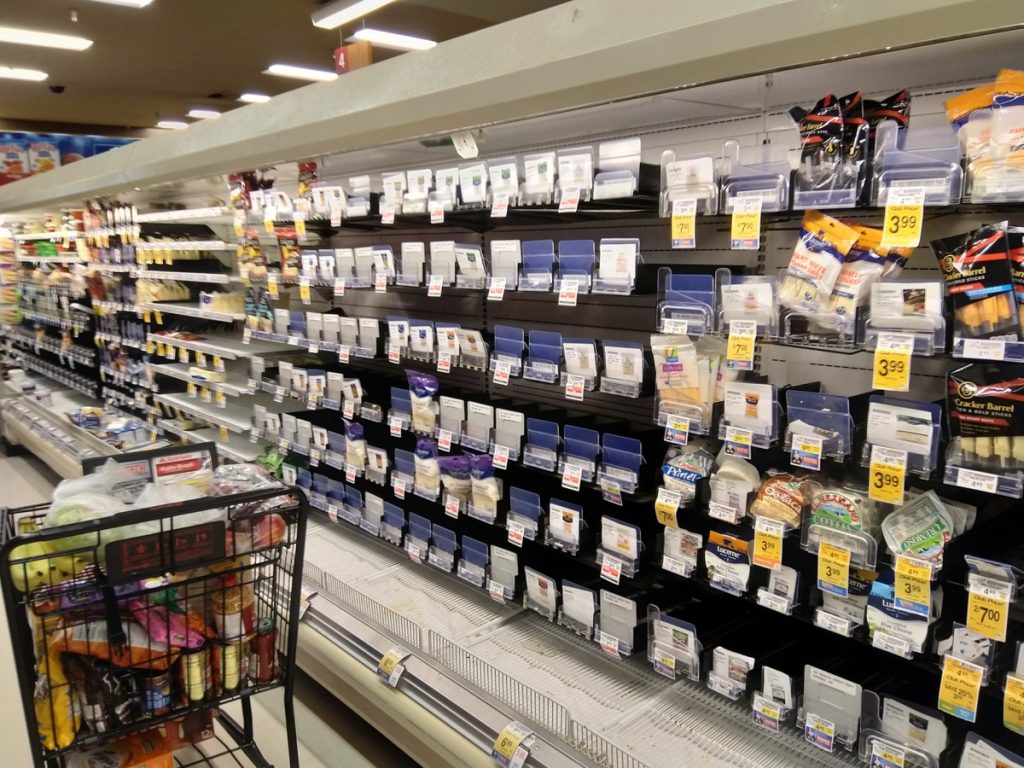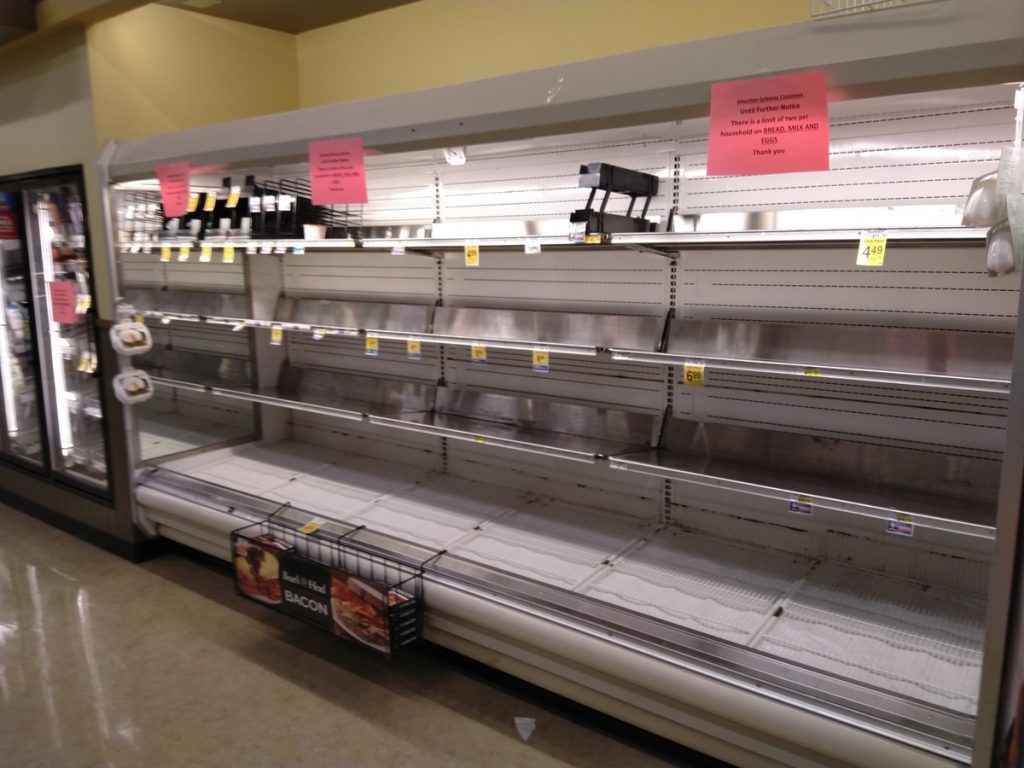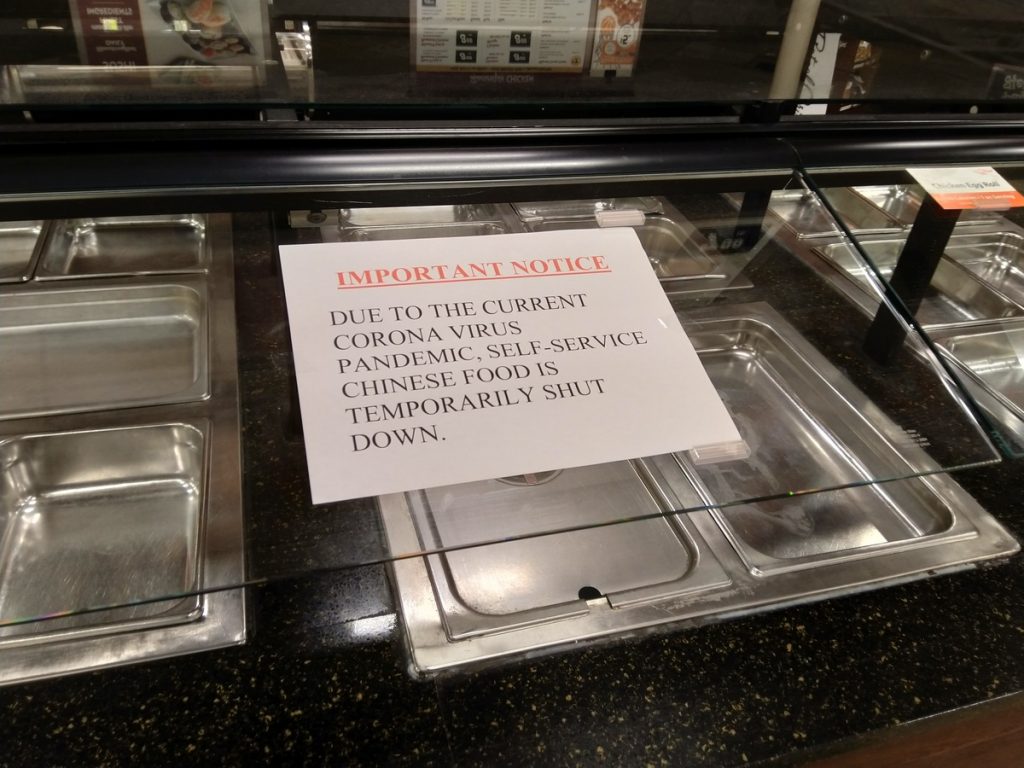- Last week's number of first-time unemployment applications released: ~3.3 million (previous max was ~700,000).
- The Senate passed (Wed. night) a third massive stimulus/relief bill, $2.2 trillion; the House passed the bill Friday afternoon and Trump signed it.
- More states (finally) enact shelter-at-home orders over the last few days: Hawaii, Idaho, Illinois, Minnesota, New Mexico, Washington, West Virginia (and more, I think). The restrictions and enforcement vary, but the gist is still "stay home."
- South Africa announces 3-week nation-wide lockdown.
- China is re-closing all movie theaters.
- Trump orders GM to immediately begin producing ventilators under Defense Production Act authority.
- Rhode Island and Florida have begun using border checkpoints to instruct travelers from out of the area that they must quarantine for 2 weeks.
- Alameda county cases: 204; 4 deaths
- U.S. cases 90,000+; 1,300+ deaths
I guess stunning headlines is the new normal because they hardly feel stunning. Within 2 days multiple major events that have never before happened in our country's history, crazy. And these kinds of headlines will continue since the worst is still to come.
In an interview, Treasury Secretary Mnuchin said he expected this $2.2 trillion package to stabilize the country for 3 months. But who knows, White House officials in the current administration have laid a long history of lying about anything and everything. So that number comes with a huge salt crystal attached. The problem with lying all the time--when your credibility suddenly really matters, you have none.
I've mentioned how the Dow Jones Industrial Average (DJIA) has been doing a few times in this series, but I don't think I've mentioned the bond market. On 3/25, the 1-, 2-, and 3-month Treasury Bonds all closed at 0.00%. 2-year bonds have been bouncing around 0.3% this week; with 10-year bonds around 0.8%. On 3/9 all Treasury bonds, from 1-month to 30-year closed below 1.0%. The 30-year bond has since "recovered" to ~1.4%. It's absolutely bonkers. The thinnest of silver-linings here is that I expect we'll be able to refinance our mortgage at around 2.5% at some point. We already have a 3.625% rate, so it wouldn't be a monumental change, but would still save thousands of dollars over the life of the loan.
Yesterday (3/26) Ohio's governor gave a press conference with Ohio Department of Health's director Dr. Amy Acton which contained this exchange between Dr. Acton and a reporter (at about 38:40 in this video: https://www.youtube.com/watch?v=9iQX-pagq9E):
Reporter: One quick clarification. You referred to this 6,000-8,000 cases--
Dr. Acton: --at peak--
Reporter: In what context? When? Is that what you perceive as the maximum?
Dr. Acton: Yah, our modelers, based on the best data we have available in Ohio--umm, and, again, that data will get better and better and refined. And that's why you'll see, when you go and look online at our graph, it's sort of shadowy because it's from like our least amount to most; umm, that will be at the peak surge that we could be seeing that many cases a day.
Reporter: You're referring to 6,000-8,000 cases at the same time?
Dr. Acton: A day.
Reporter: A Day?!
Dr. Acton: A day.
[5-seconds silence]
Reporter: New cases a day.
Dr. Acton: Yes. Remember this is doubling--in New York right now it's doubling every three days.
Reporter: Do you agree around the May 1st time frame?
Dr. Acton: That's our best projection. And it's really holding true; that's some of the national modeling that had been done in the U.K. modeling and it's looking from our preliminary look--our first look into Ohio's data that we had at least enough to do that general forecasting--it's looking like that. But everything we do--I know this sounds terrible, but the more we can push that surge off the better our hospitals are getting ready--they're getting ready and building out their systems, so every day matters.
Here is the modeling graph she referred to:

As you can see, at least in Ohio, this is just beginning (since they have been mitigating spread). And that's true of most, if not all, of the rest of the country too. I haven't been able to find any modeling specifically for California.
From China, over the next couple of weeks we'll begin to find out what happens after suppression measures are lifted. Their numbers had been looking under control (assuming the data can be trusted), but a re-closing of movie theaters may suggest they're already seeing upticks in infection rates.
Jess ordered "Frozen II" as a quarantine monotony breaker which arrived today. So the girls have that to look forward to sometime in the next few days.
Erin had some fancy cookies delivered to us yesterday.
Heather and Corinne were able to spend some time outside on their bikes today. Corinne is working on figuring out the balance bike (no pedals). She's picking it up pretty quickly.
I've modified my schedule this week. Due to consistently low-quality sleep for the last many days I'm no longer setting my alarm. I figure if I'm actually asleep in the morning it will be better to get that sleep than to force myself out of bed. With the girls needing attention it's not like I can sleep in late anyway, but why add an extra intrusion to possible sleep? With that schedule change I've also been taking my daily walks at the end of my work day.
Earlier this week Jess braved the healthcare system to have some blood work done and to pick up her new migraine medication. She said there was a person doing screening outside the facility who would then mark a paper indicating your destination and that you'd been screened. It was question-based screening, not temperature-taking or anything.
Our wisteria looks like it's going to have a ton of flowers this year. It seems to be regrowing pretty strongly after cutting it down to replace the pergola and clear the rotted sections.




